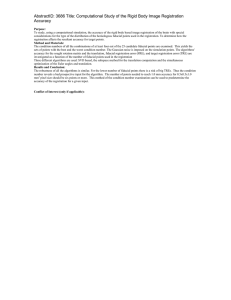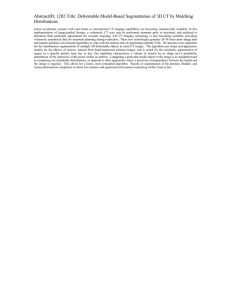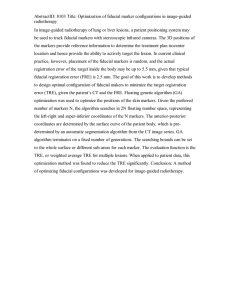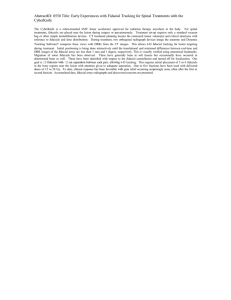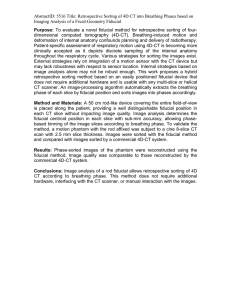AbstractID: 3337 Title: Active Tool/Fiducial Segmentation and Tracking in Multiple Modalities
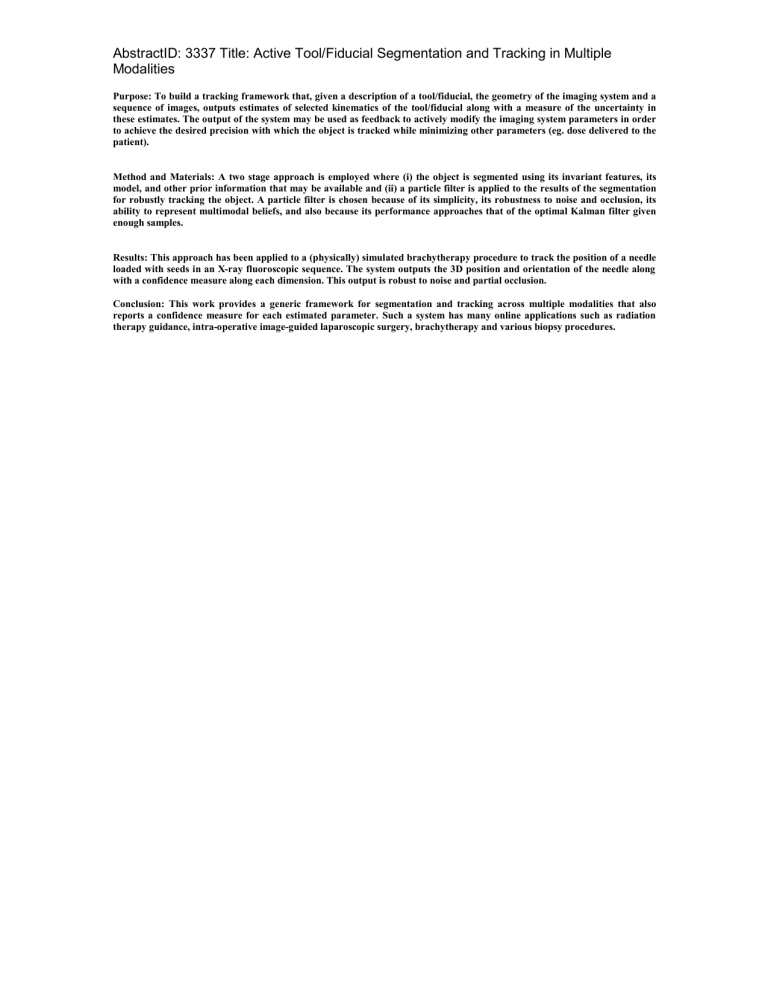
AbstractID: 3337 Title: Active Tool/Fiducial Segmentation and Tracking in Multiple
Modalities
Purpose: To build a tracking framework that, given a description of a tool/fiducial, the geometry of the imaging system and a sequence of images, outputs estimates of selected kinematics of the tool/fiducial along with a measure of the uncertainty in these estimates. The output of the system may be used as feedback to actively modify the imaging system parameters in order to achieve the desired precision with which the object is tracked while minimizing other parameters (eg. dose delivered to the patient).
Method and Materials: A two stage approach is employed where (i) the object is segmented using its invariant features, its model, and other prior information that may be available and (ii) a particle filter is applied to the results of the segmentation for robustly tracking the object. A particle filter is chosen because of its simplicity, its robustness to noise and occlusion, its ability to represent multimodal beliefs, and also because its performance approaches that of the optimal Kalman filter given enough samples.
Results: This approach has been applied to a (physically) simulated brachytherapy procedure to track the position of a needle loaded with seeds in an X-ray fluoroscopic sequence. The system outputs the 3D position and orientation of the needle along with a confidence measure along each dimension. This output is robust to noise and partial occlusion.
Conclusion: This work provides a generic framework for segmentation and tracking across multiple modalities that also reports a confidence measure for each estimated parameter. Such a system has many online applications such as radiation therapy guidance, intra-operative image-guided laparoscopic surgery, brachytherapy and various biopsy procedures.
